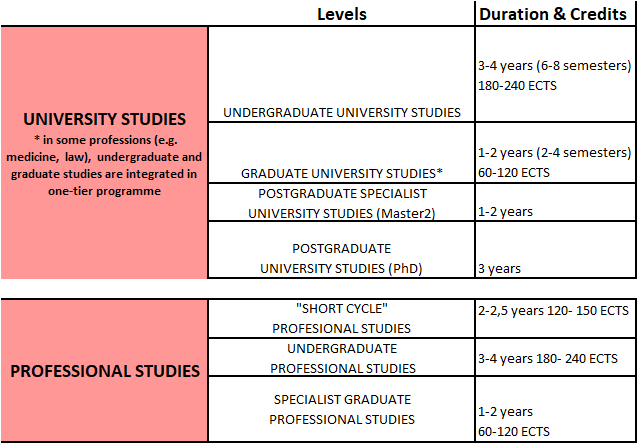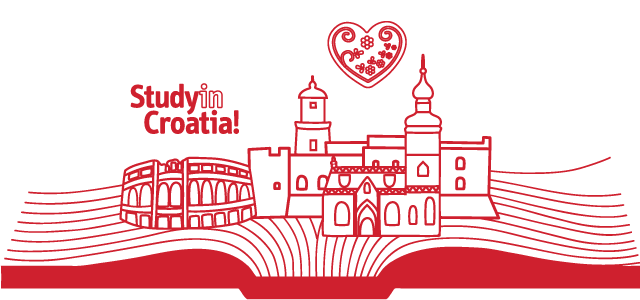HIGHER EDUCATION SYSTEM
Croatia has a binary higher education system, meaning that prospective students can choose between two types of higher education studies:
- University studies consisting of academic programmes that are conducted solely at universities and allow students to work in science and higher education, private and public sectors, as well as in wider society. These studies can be attended in three cycles: undergraduate, graduate, and postgraduate. In certain cases, study programmes may integrate undergraduate and graduate studies.
- Professional studies equip students with the skills necessary for their immediate inclusion in the labour market. They are provided by colleges, polytechnics, and universities. Professional studies include the short-cycle professional undergraduate programme and undergraduate and specialist graduate professional studies.

The Bologna Process in Croatia
The Bologna Process, aimed to harmonise the national higher education systems in Europe in order to create a European Higher Education Area. This process led to greater compatibility and comparability of higher education systems in Europe and thereby made it easier for learners to be mobile and for institutions to attract students and scholars from other countries and continents. Croatian higher education system is fully aligned with the Bologna Process principles - all programmes are structured according to three cycles (undergraduate, graduate and postgraduate) and European Credit Transfer System (ECTS) is used to express the student workload.
Private and public higher education institutions
Croatia has both public and private higher education institutions. Most Croatian universities are public institutions. Almost all polytechnics are public institutions, while most colleges of applied sciences are private institutions. Both polytechnics and colleges of applied sciences provide first and second cycle professional study programmes – these institutions differ only in the number of study programmes they provide, not in the type of programmes.
Grading system
The Croatian national grading system consists of five grades with numerical equivalents, from highest to lowest grade as follows:
- Excellent (izvrstan) - 5
- Very good (vrlo dobar) - 4
- Good (dobar) - 3
- Sufficient (dovoljan) - 2 Note: minimum pass grade
- Fail (nedovoljan) - 1 Note: requires student to retake exam/resubmit work
Some HEIs may also use a ranking system in assigning grades to students. In addition to grades, higher education institutions in Croatia award ECTS credits (European Credit Transfer System), as a part of the Bologna system. It is common for 1 ECTS credit to be equivalent to approx. 30 student working hours. Credits are awarded when a course has been completed and all required examinations have been successfully taken. 60 ECTS credits represent the workload of one year of study and 30 ECTS credits represent the workload of one semester. Grades and ECTS credits are recorded in each student’s Student Transcript records which contain basic information on courses taken.
